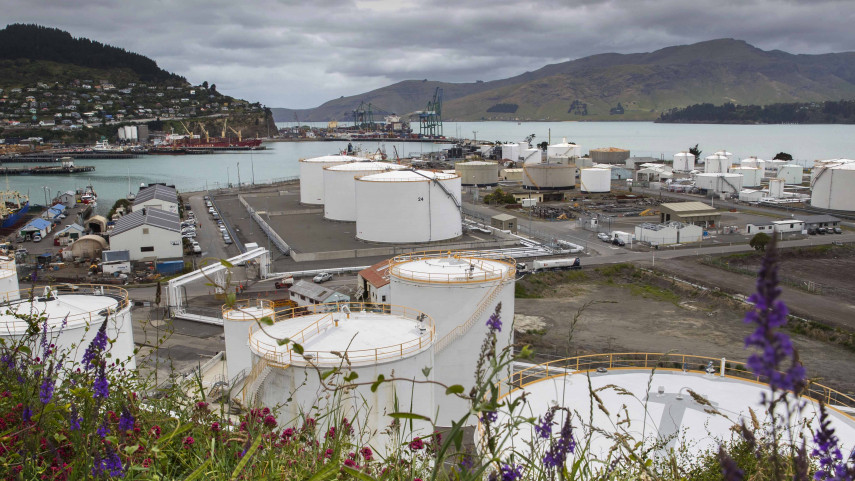
Risk assessment of Lyttelton tank farm released

Share this story
The findings of a peer-reviewed risk analysis for the bulk liquid storage tanks at Naval Point in Lyttelton have been released to the community and will inform ongoing work in the area.

The bulk liquid storage tanks at Lyttelton.
The Quantitative Risk Analysis (QRA) provides a better understanding of the issues and will inform further work around risk identification and management at Naval Point, along with plans to develop the recreation area.
Christchurch City Council Head of Planning and Strategic Transport Richard Osborne says the analysis quantifies risk in terms of “annual individual fatality risk”, similar to risk measurements for natural hazards in the Port Hills following the Canterbury earthquakes of 2010 and 2011.
“In terms of annual individual fatality, the analysis shows that nearby residents are at considerably less risk from the storage facilities than many Port Hills residents are from hazards like rockfall and landslide. When compared to other risks, such as the chance of being involved in a fatal car accident in New Zealand in any given year, the risk posed by the tank farm to nearby residents remains considerably less.
“We’ve spoken directly to local residents and interest groups about the findings and what happens next. The findings will also help inform the Council’s plans to develop the recreation area at Naval Point, and will feed-in to ongoing discussions about a future cruise ship berth at Lyttelton. These are both ongoing processes, with no final decisions made in either situation.
“As a result of the risk analysis, the Council is now considering options to help manage risk levels in and around the area. This could include measures like no parking signage on nearby roads to reduce the duration the public spends in higher risk areas and identifying an emergency evacuation point,” he says.
The Council also notes that new Health and Safety legislation requires the oil companies that own the facilities to prepare safety assessments by April 2018 that minimise or eliminate risks associated with operations.
Mr Osborne says the report makes particular note of the fact there is only one road in and out of the Naval Point area, and that some sections of the road are subject to greater levels of risk. This matter is being considered further by all the parties involved in the process.
Deputy Mayor Andrew Turner says the QRA provides useful information that will help inform future Council decisions in the Naval Point area.
“The findings should not raise any immediate concern for nearby residents, however the Council will be considering extra measures to prudently manage public risk around Naval Point. The reports will also help us make future decisions about development in the area, including plans for recreation improvements and the future of cruise ships in Christchurch.”
The bulk liquid storage tanks at Naval Point store petroleum products which supply outlets and commercial interests throughout Canterbury and the South Island. The need for a risk analysis in the area was identified last year through the Lyttelton Port Recovery Plan process. A range of parties have been involved in the process, including Christchurch City Council, Environment Canterbury and Lyttelton Port Company, along with the oil companies and other lessees of the storage facilities.
The QRA was carried out by Sherpa Consulting, then peer-reviewed by Advisian, part of the Worley Parsons Group. The report and peer review are available online at www.ccc.govt.nz.
